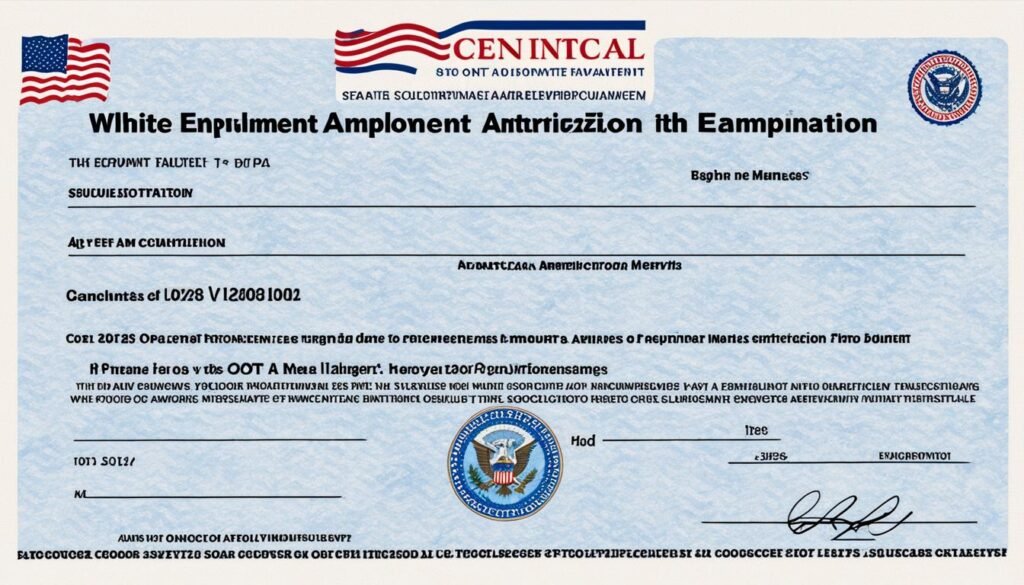Imagine completing your Master’s degree in the U.S. and wanting to harness the opportunity to transform your newfound knowledge into expertise. You might wonder, “What are my options for an post-graduation stay in the land of opportunity?” As an international student, you have traveled far and worked hard for your degree. However, the journey doesn’t end there. You can potentially extend your stay through various avenues like the F-1 visa extension, the OPT extension, and exploring other USA post-Masters options. In the following exploration of available opportunities, you’ll discover the pathways that could keep you on U.S. soil, making strides in your professional field.
Key Takeaways
- Understand the ins and outs of the F-1 visa and its bearing on your post-graduation prospects in the USA.
- Discover how an OPT extension can add up to 12 or 36 months to your American job search and work experience.
- Learn about the qualification criteria for STEM graduates to receive an extended 24-month OPT extension.
- Explore the transition from F-1 to H-1B visa status as a means to professional growth.
- Assess the benefits of seeking the help of established universities like The Continents States University for career guidance.
Understanding Your F-1 Visa Post-Graduation
Embarking on your professional journey after completing a masters can often be a time of uncertainty. But as an international graduate, your F-1 visa opens the door to valuable work experiences in the United States, ensuring that you can apply the knowledge acquired during your studies in a real-world setting. Let’s explore the critical steps you need to take to not only gain this experience but also to potentially extend your time in the US.
OPT: Your Key to Gaining Experience and Extending Your Stay
For many international students, the Optional Practical Training (OPT) program represents the first step towards gaining hands-on work experience in their chosen field. With the possibility of a 12-month OPT extension, you have the chance to build a professional portfolio that’s both impressive and relevant. And if you’re a STEM graduate, you can further enhance your resume with the 24-month OPT extension. The key is to act swiftly and apply for your OPT extension timely.
From F-1 to H-1B: Transitioning from Student to Professional Status
Moving from F-1 to H-1B visa status is a significant milestone in the transition from student to full-fledged professional. This pathway requires finding an employer willing to sponsor your H-1B visa—a Person in Specialty Occupation Visa, which acknowledges the specialized knowledge and higher education degree you possess. Starting with a three-year tenure which may be extended, transitioning to an H-1B visa enables you to carve out your professional niche in the US.
- Identify a specialty occupation position offering sponsorship for H-1B visa
- Understand the cap-subject H-1B lottery system, which occurs annually
- Prepare for the possibility of an H-1B extension for a total stay of up to six years
- Stay informed about changes to visa protocols and transition processes
In an ever-evolving career landscape, it’s crucial you stay informed about the latest immigration policies affecting post-graduation work opportunities, OPT extensions, and the H-1B visa transition process. Securing those first critical months of work experience through OPT is just the beginning of a promising career trajectory in the United States.
Optional Practical Training (OPT): A Gateway to Employment
As you embark on the transition from academia to real-world experience, understanding the OPT application process is crucial for maintaining your F-1 student work authorization. The journey towards securing OPT employment opens up a world of opportunity to apply your hard-earned knowledge and enhance your professional skills.
- Educate Yourself Early: OPT eligibility requires you to be enrolled for at least nine months, positioning you well to anticipate steps for timely application.
- Application Timing: With USCIS processing times taking up to 90 days, it’s imperative to apply early for your EAD for OPT to avoid any employment hiccups post-graduation.
- Job Relevance: Seek employment that aligns with your major to ensure compliance with OPT regulations and to augment the practical application of your studies.
- Adherence to Deadlines: All OPT-related employment must be concluded within 14 months of degree completion, underscoring the importance of time management in your post-graduation plan.
With diligent preparation and a proactive approach to your OPT strategy, you’ll be well on your way to a seamless transition into the professional world. Remember, securing your OPT work authorization is not just about finding a job; it’s about shaping your future career trajectory.

Navigating STEM OPT Extension for a Lengthier Stay in the USA
If you’ve earned a degree in a STEM field, you stand at the forefront of an opportunity to extend your post-graduation stay in the United States significantly. The STEM OPT extension is specifically designed for graduates like you, enabling a 24-month OPT extension beyond the initial 12 months. This means you could engage in practical training and employment related to your specialized field for up to three years after completing your studies. It’s a golden chance to gain valuable experience and lay the foundation for a thriving career in industries that drive innovation and economic growth.

Eligibility and Application Process for STEM Graduates
Delving into the eligibility criteria, a cardinal rule is that your degree must emanate from an institution accredited by the U.S. Department of Education and certified by the Student and Exchange Visitor Program (SEVP). You must also be currently participating in post-completion OPT, have a job or job offer from an employer enrolled in the U.S. government’s E-Verify program, and apply before your current OPT expiration. Remember, timeliness is key; submitting your application timely ensures you don’t miss out on this incredible extension.
Sector-Specific STEM Degrees That Qualify for the Extension
Qualifying for the STEM OPT extension requires more than just determination; it requires that your field of study is on the Department of Homeland Security STEM Designated Degree Program List. Noteworthy fields include:
- Engineering and engineering technologies
- Computer science applications
- Biological and biomedical sciences
- Physical sciences
- Mathematics and statistics
Industries integral to the sectors above are continually expanding, demanding skilled graduates capable of propelling technological and scientific advancement. By securing a role that aligns with your STEM degree program and obtaining the STEM OPT extension, you’re not just augmenting your resume; you’re positioning yourself within the vanguard of your field’s future.
To traverse the complexities of the application process and solidify your understanding of eligibility, the U.S. Immigration and Customs Enforcement’s official website—ICE.gov—provides a repository of valuable information and guidance on the STEM OPT extension.
Exploring Career Prospects with The Continents States University
As you contemplate the next pivotal step in your educational journey, imagine a place where traditional exams are replaced with engaging, real-world tasks. At The Continents States University, you’ll discover degree programs meticulously designed to arm you with practical skills—preparing you for the dynamic demands of today’s job market. Here, your academic success is not just about scoring high on tests; it’s about embracing the kind of practical experience opportunities that employers truly value.
At The Continents States University, the career services team is dedicated to bridging the gap between your academic achievements and professional aspirations. They work tirelessly to ensure you’re not just prepared to enter the workforce but primed to excel in it. Leverage their expertise to unlock exclusive employment avenues and chart a course for your professional journey within the United States—potentially extending your stay after completing your Masters.
- Personalized career counseling tailored to your unique strengths and career goals
- Mentorship programs connecting you with industry leaders and alumni
- Internship opportunities that allow you to apply classroom knowledge in real-world scenarios
- Job placement assistance that aligns with your specialized skills and interests
- Networking events that put you in the same room as potential employers
Why settle for conventional when you can have extraordinary? The Continents States University’s no-exams degree programs place a firm emphasis on hands-on projects and assignments that mirror the complexities of the professional world. With their guidance, you’re not just preparing for a job; you’re advancing toward a fulfilling career that could redefine your future.

Employment Authorization Documents (EAD): Your Work Permit Explained
Embarking on your career journey in the USA post-graduation is an exciting prospect, and the gateway to this opportunity is obtaining an Employment Authorization Document (EAD). As an F-1 student, the EAD application marks the beginning of your transition from academic life to the professional world. Your application for this essential document commences with the submission of Form I-765, which is a fundamental step in USCIS processing to ensure you meet the strict OPT requirements.

Preparing Your Application for OPT
To avoid delays or potential setbacks, it’s imperative that you prepare your application meticulously. Consider the following checklist to streamline your EAD application process:
- Gather all necessary documentation, including your passport, visa, Form I-20, and academic records.
- Verify your eligibility timeframe and ensure you apply within the required window before degree completion.
- Consult with your Designated School Official (DSO) to endorse your OPT application in SEVIS.
- Accurately complete Form I-765 for employment authorization, adhering to USCIS guidelines.
Understanding the Importance of Form I-765
Form I-765, Application for Employment Authorization, is the cornerstone of your EAD application. Recognizing its importance is paramount as it offers:
- A formal request to USCIS for permission to work legally in the U.S. in your field of study.
- The opportunity to detail your qualifications and the basis of your eligibility for the OPT program.
- A record of your identity and immigration history, crucial for adherence to immigration laws and procedures.
In conclusion, starting your EAD application and understanding Form I-765 early can significantly enhance your chances of timely approval. By ensuring compliance with all OPT requirements, you are paving the way to a fruitful post-graduation experience in the United States. So take that step now, and begin planning for a future bright with opportunities.
The Pathway From An F-1 Visa Towards an H-1B Visa
If you’re an international student who’s recently completed a Master’s degree in the USA, you might be considering how to extend your stay and gain valuable work experience. Transitioning from an F-1 to H-1B visa, which is a specialty occupation visa, is a popular path. It allows you to work in fields that typically require expertise in specialized areas. With the H-1B visa process, you’re not just securing a job; you’re paving the way for a robust career in the USA post-graduation.
Understanding the H-1B visa requirements is crucial for a smooth F-1 to H-1B transition. To qualify for this work visa, your job role should necessitate the application of specialized knowledge and typically require at least a Bachelor’s degree or its equivalent. This is where your advanced degree plays a pivotal role, making you a prime candidate for numerous positions that fit the specialty occupation visa categories.
- Identify potential employers willing to sponsor your H-1B visa.
- Confirm that the job offer qualifies as a ‘specialty occupation.’
- Ensure you have all the necessary documentation for the H-1B visa process.
- Stay informed about the H-1B lottery system, as there’s an annual cap on the number of visas issued.
Remember, the H-1B visa not only grants you the opportunity to work in the USA post-graduation, but it also can be a stepping stone towards permanent residency should you choose to pursue that route. The initial H-1B visa allows you a stay of three years, which can be extended, ensuring you have ample time to establish yourself professionally and consider long-term options.
Take the leap towards securing your future in the USA by embarking on the H-1B visa process, and transition confidently from student to professional status.
Acquiring Permanent Residency: Understanding the Green Card Process
If you’re pondering the next steps towards establishing your life in the USA, securing permanent residency might be at the forefront of your mind. A green card application symbolizes a gateway to new opportunities and stability in this land of promise. As an F-1 student, your journey doesn’t end at graduation—several avenues exist that could potentially lead to this coveted status, including employer sponsorship and unique green card options tailored for students like you.
Employment-Based Visas: EB-2 and EB-3 Green Cards
Embarking on the green card process often starts with securing a job that translates into employer sponsorship. The EB-2 and EB-3 visas are employment-based preferences that pave the path for skilled workers and professionals to attain permanent residency.
- EB-2 Visas: This category is designed for those holding advanced degrees or possessing exceptional ability in their field. Your expertise could be your ticket to long-term residency and career growth in the USA.
- EB-3 Visas: This option caters to skilled workers, professionals, and other workers with at least two years of training or experience. Your job qualifications play a critical role in qualifying for this visa type.
Both pathways require a Labor Certification and a permanent, full-time job offer. If you fulfill the criteria, your employer can initiate the sponsorship process—a monumental leap towards your American dream.
Alternate Routes to a Green Card: Asylum and Military Service
Beyond employer sponsorship, other less conventional routes could be your avenue to permanent residency. Though not applicable to all, these options are crucial to consider if they align with your circumstances:
- Asylum: If you face persecution in your home country, seeking asylum in the USA might offer a protective and permanent solution.
- Military Service: Serving in the U.S. Armed Forces can also create eligibility for a green card, honoring your commitment with the opportunity to call America home.
Remember, obtaining a green card elevates your status to that of a permanent resident, endowing you with the right to live and work indefinitely in the USA while expecting you to uphold the responsibilities that come with your new status, such as adhering to the law and participating in the tax system. Whichever route you pursue, it’s a journey towards stability and potential citizenship, a path worth exploring for your future.
Compliance and Maintenance of Legal Status Post-Masters
As an international student who has recently earned a Masters degree, understanding and complying with the nuances of legal status maintenance is fundamental to extending your journey in the U.S. Whether you’re on an F-1 or M-1 visa, the governing regulations set forth a framework to ensure your activities align with SEVP-certified schools’ requirements for academic engagement.
Preserving your legal status involves a series of obligations, and here’s where your attention is paramount:
- Adherence to F-1 and M-1 regulations is non-negotiable. Ensure you are enrolled in a full course load and making satisfactory academic progress.
- Engage in only authorized employment. Whether it’s practical training or on-campus employment, your work must comply with the conditions of your visa.
- Maintain ties with your institution. Regular interaction with your Designated School Official (DSO) will keep you informed of any changes in visa policies and academic requirements.
Crucially, for F-1 students, post-completion of studies presents a 60-day grace period to decide on your next steps, be it enrollment in another program, transitioning to a different visa, or departing the U.S. M-1 students have a shorter, 30-day period to chart their course forward. Strategic planning during these periods is essential for a seamless transition.
- In determining your pathway, whether it’s further education or seeking an OPT extension, be cognizant of the deadlines and paperwork involved.
- Your proactive measures will not only safeguard your current legal status but also open doors to potential opportunities for extended stay in America.
Investing efforts in meeting your visa conditions exemplifies your commitment to educational endeavors and upholding the integrity of your status. It is in your hands to navigate the intricacies of the system and emerge successful in your academic and professional pursuits in the United States.
Conclusion
Your journey to extending your stay in the USA after completing a Masters program offers a multifaceted landscape of opportunities and meticulous legal considerations. It is critical for you to fully engage with the array of visa options and extensions available, which can serve as a fundamental backbone for your career development. Through programs like OPT and the H-1B visa, you have the chance to translate academic success into professional experience, thus potentially allowing you a longer stay and an enriched professional life in the U.S.
Institutions such as The Continents States University play a pivotal role in simplifying the transition from post-Masters work and study to career advancement. Their focus on equipping students with practical knowledge and the necessary support for navigating the U.S. job market can be an invaluable asset to you. As you venture into this next phase, staying informed and compliant with the legalities governing your status is as essential as the professional strides you aim to make.
Remember, the key to a successful extension of your post-graduate journey lies in proactive steps and knowledgeable consultation. Seize the control over your career trajectory by understanding the visa process, adhering to regulatory requirements, and considering educational institutions that prepare you for a robust professional path. Your ambition and vigilance are leading towards a promising future as you endeavor to extend your stay in the USA post-Masters.


